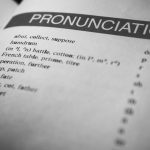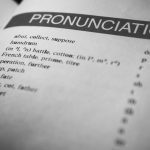You pronounce “batik” as “bah-teek,” with the emphasis on the crisp second syllable, reflecting its Indonesian origin. Avoid saying “bay-tick” or overemphasizing the first syllable, as these are common mistakes. Depending on where you are, slight accent differences might change the sound, but keeping the soft “bah” and clear “teek” is key. If you want to master this pronunciation and appreciate its rich cultural background, there’s more to discover about its fascinating story and significance.
Table of Contents
Key Takeaways
- Pronounce “batik” as “bah-teek,” emphasizing the second syllable for correct pronunciation.
- Avoid mispronunciations like “bay-tick” or stressing the first syllable too much.
- The “t” in “batik” should be clear but soft, not a hard stop.
- Regional variations include “BAH-tik” in Southeast Asia and “Buh-TIK” in American English.
- Practicing aloud with the phonetic sounds “bah” (soft) and “teek” (crisp) builds confidence.
Origins of the Word Batik
Although you might already be familiar with batik as a fabric art, you may not know where the word itself comes from. The term “batik” originates from the Javanese language in Indonesia, combining “amba,” meaning to write, and “titik,” meaning dot or point. This reflects the technique of applying wax dots or lines to fabric to create intricate patterns.
When you say “batik,” you’re actually referring to a centuries-old tradition deeply rooted in Indonesian culture. Understanding this origin helps you appreciate the craftsmanship behind each piece.
Phonetic Breakdown of Batik
You might be wondering how to say “batik” correctly.
It’s pronounced as “bah-teek,” with emphasis on the second syllable. Many people mistakenly say “bat-ik” or “bay-tik,” so let’s clear that up.
Pronunciation Guide
When you say “batik,” it helps to break the word down into its basic sounds: “bah-teek.” The emphasis falls on the second syllable, making it clear and easy to remember.
Start with a soft “bah,” like the beginning of “bat,” followed by a crisp “teek,” where the “ee” sounds like the vowel in “see.” Together, these sounds form a smooth, two-syllable word.
To pronounce it confidently, say it slowly at first, then speed up as you get comfortable. Remember, the key is stressing the “teek” part, which distinguishes it from similar words.
Practicing aloud will help you say “batik” naturally, whether you’re discussing the fabric or simply appreciating its cultural beauty.
Common Mispronunciations
How often have you heard “batik” pronounced incorrectly? You’re not alone—many people trip over this word. It’s easy to confuse the sounds if you’re not familiar with the correct pronunciation: /bəˈtiːk/.
Here are some common mispronunciations you might encounter:
- Saying “bay-tick” instead of “buh-teek”
- Pronouncing it “bat-ick,” stressing the first syllable too hard
- Saying “bat-ik” with a short “i” sound
- Adding an extra syllable like “bat-ee-ick”
- Turning it into “bat-ick” with a hard “k” ending
Common Mispronunciations to Avoid
You might hear people mispronounce batik as “bay-tick” or “bat-ick,” which can be confusing.
Regional accents also change how the word sounds, so paying attention helps you say it right.
Watch out for common spelling mistakes that can throw off your pronunciation too.
Typical Pronunciation Errors
Although batik is a popular fabric, many people often mispronounce its name, leading to confusion or misunderstanding. You might hear it said wrong in casual conversations or even in stores.
To avoid this, be aware of these typical pronunciation errors:
- Saying “bay-tick” instead of “bah-teek”
- Stressing the first syllable too heavily
- Pronouncing the “k” as a hard stop rather than soft
- Confusing it with similar-sounding words like “battic” or “battick”
- Overemphasizing the “t” sound, making it sound choppy
Getting batik right helps show respect for its cultural roots and guarantees clear communication.
Keep practicing, and you’ll sound confident when discussing this beautiful fabric.
Regional Accent Variations
When regional accents come into play, the pronunciation of “batik” can shift in ways that may confuse listeners unfamiliar with those variations. You might hear subtle differences depending on where someone is from. For example, some accents stress the first syllable more, while others soften the “t” sound. Being aware of these variations helps you avoid misunderstanding or mispronouncing the word yourself.
| Region | Common Pronunciation Variation |
|---|---|
| Southeast Asia | “BAH-tik” (clear ‘t’) |
| American English | “Buh-TIK” (stress on second) |
| British English | “BAT-ik” (soft ‘t’, short ‘a’) |
| Australian | “BAT-ick” (slightly clipped) |
Knowing these can improve your communication and appreciation of batik fabric discussions.
Common Spelling Misreads
Understanding regional accent variations sets the stage for recognizing common spelling misreads that often lead to mispronunciations of “batik.”
Mistaking the word for similar-looking terms or misreading its letters can cause confusion, especially for those new to discussing this unique fabric. To avoid errors, watch out for these common slips:
- Confusing “batik” with “batter” or “battik”
- Misreading the “k” as a “c” and saying “batic”
- Overemphasizing the first syllable, leading to “BA-tik” instead of “ba-TIK”
- Mixing up the “a” sound, pronouncing it like “bat-ick”
- Assuming it’s spelled “batique,” causing pronunciation errors
Pronunciation in Different Languages
Since batik fabric originates from various cultures, you’ll notice its name pronounced differently across languages.
In Indonesian, where batik has deep roots, it’s said as “BAH-teek,” with a clear emphasis on the first syllable. When you hear it in Javanese, a regional language in Indonesia, it sounds quite similar but may have softer vowel sounds.
In English, many say “BAT-ick” or “BAH-tick,” which can differ from the original pronunciation. If you’re exploring batik in Malay-speaking countries, you’ll often hear “BAH-teek” again, close to Indonesian.
When you encounter batik in other languages, the pronunciation adapts to local sounds but usually sticks close to the original.
Cultural Significance of Batik Fabric
Although batik fabric is admired worldwide for its beauty, its cultural significance runs much deeper. When you explore batik, you’re connecting with a rich tradition that reflects identity, history, and belief systems.
Here’s why batik matters culturally:
- It symbolizes social status and community roles in many Indonesian cultures.
- It carries spiritual meanings, often used in ceremonies and rituals.
- Patterns tell stories or represent local myths and nature.
- It serves as a form of artistic expression passed down through generations.
- Wearing batik can express pride in heritage and cultural roots.
Understanding these facets helps you appreciate batik not just as fabric, but as a living cultural legacy that continues to inspire and unite people worldwide.
Tips for Practicing the Correct Pronunciation
Mastering the pronunciation of “batik” adds respect and authenticity when discussing this beautiful fabric. To practice correctly, focus on breaking the word into two syllables: “ba” and “tik.” Listening to native speakers can help you grasp the subtle vowel sounds. Repeating the word aloud multiple times will build confidence and muscle memory.
Here are some practical tips:
| Tip | Description |
|---|---|
| Listen Actively | Use videos or audio from native speakers |
| Break It Down | Split “batik” into “ba” + “tik” |
| Repeat Slowly | Say the word slowly, then gradually faster |
| Record Yourself | Compare your pronunciation to native audio |
Practice regularly, and you’ll pronounce “batik” naturally in no time.
Frequently Asked Questions
What Materials Are Used to Make Batik Fabric?
You’ll find batik fabric mostly made from natural fibers like cotton and silk. These materials absorb wax and dyes well, helping create the intricate patterns that define batik’s unique, vibrant designs.
How Is Batik Fabric Traditionally Made?
When it comes to batik fabric, you start by applying wax to cloth, then dye it. The wax resists the dye, creating patterns. You repeat this process, peeling off wax like peeling an onion, revealing intricate designs.
What Countries Are Famous for Batik Production?
You’ll find batik production famous in Indonesia, Malaysia, and Thailand. These countries have rich traditions crafting batik fabric, each with unique patterns and techniques that reflect their cultural heritage and artistic expression.
Can Batik Fabric Be Machine Washed Safely?
You might think machine washing batik fabric is safe, but it’s best to avoid it. Machine washing can fade colors and damage the wax patterns. Instead, hand wash gently with cold water to preserve its beauty.
What Are Common Uses for Batik Fabric in Fashion?
You’ll find batik fabric commonly used for dresses, skirts, shirts, scarves, and accessories. Its vibrant patterns add unique style, making it perfect for casual and formal wear, plus it’s great for creating statement pieces in your wardrobe.
- Does Chiffon Fabric Stink - July 15, 2025
- Does Chiffon Fabric Affect the Economy - July 15, 2025
- Does Cotton Fabric Have a Nap - July 15, 2025







